Looking to build a social media strategy that drives your business or personal brand’s narrative to the next level? Well, you’re off to a great start.
In this blog, we’ll share the process of building a social media strategy that helps you start off on the right foot.
We all are well aware of the importance of social media strategy, but very few of us are actually able to stand out from all the social media noise. The reason is that many of us don’t succeed in focusing only on the things that serve our goals.
So, let’s grab a cup of coffee, as this is going to be a very detailed piece of content.
The easiest way to manage and grow your social channels.

What is a social media strategy?
A social media strategy is a comprehensive road map that shows how your company will use social media to accomplish your marketing and business objectives.
A social strategy serves as a guide for your social media marketing initiatives, ensuring they are in line with your company’s overall goals and carefully planned to yield favorable outcomes.
It includes your target audience, posting schedule, social media marketing campaigns, and interaction strategy that advance your company’s image and sales. Numerous businesses utilize social media to communicate with clients, offer assistance, highlight new features and goods, and announce sales and promotions.
Why does your business need a social media strategy?
On social media, things happen really quickly. Every day, platforms, features, and algorithms change. It’s also very simple to fall behind without a well-thought-out plan.
A social media strategy provides the boundaries and organization you need to stay on the right track and avoid becoming overwhelmed. You require a social strategy for the following additional reasons:
- Purposeful direction: A social media marketing strategy provides a clear roadmap for your online activities. It outlines your objectives, target audience, content themes, and the platforms you’ll use. This clarity ensures that every post, comment, or ad serves a purpose in achieving your business goals.
- Effective resource allocation: With a strategy in place, you can allocate your time, effort, and budget more efficiently. Instead of randomly posting on various platforms, you focus on channels where your audience is most active, optimizing your resources for maximum impact.
- Builds brand awareness and identity: Social media is where brands come to life. A well-crafted strategy helps build brand awareness by consistently showcasing your values, voice, and offerings. It’s about creating a memorable impression in the minds of your audience amidst the sea of online content.
Also Read: Unlocking the Power of Brand Identity: An Expert Guide
- Engages and retains customers: Social media is a powerful tool for engagement. A strategy ensures that you’re not just broadcasting messages but also actively listening and responding to your audience. By fostering conversations, addressing concerns, and providing valuable content, you create loyal customers who keep coming back.
Related Read: Engagement Hacks On Social Media Platforms
- Keeps you competitive: In the fast-paced world of social media, trends change rapidly. A strategy helps you stay ahead of the curve by adapting to new features, algorithms, and best practices. This ensures that your brand remains relevant and competitive in the digital space.
Try this: Social media competitor analysis tool to keep tabs on your competitors.
- Measurable results and optimization: Perhaps most importantly, a social media strategy allows you to measure your efforts. By tracking key metrics such as engagement rates, click-throughs, conversions, and follower growth, you gain valuable insights. This data-driven approach enables you to tweak your strategy for better performance over time.
An 11-step guide to building a successful social media strategy
Let us walk you through the process of building a winning social media strategy that will help you achieve your company goals.
Also Read: How to Build an Accomplished Social Media Team for Your Agency
1. Set social media marketing goals
This is especially important for B2B brands that are just dipping their toes into the social media waters. It’s important to make sure you have a clear understanding of your goals before diving in.

Setting realistic and measurable goals will steer your social media content strategy in the right direction. Determine what you want to accomplish, and then create a content strategy that helps you achieve those goals.
Below are some of the common social media marketing goals.
- Increase brand awareness
- Grow your audience
- Generate sales and leads
- Grow social media engagement
- Drive traffic to your site
- Improved social media customer service
Once you know your goals, it’s time to start tracking them. There are plenty of ways to measure your success across each platform.
For example, Facebook insights are great for tracking reach and engagement on posts as well as traffic to external website URLs. Similarly, Twitter (X) analytics can help you track impressions and engagement on tweets, retweets, favorites, and link clicks.
2. Know your audience inside out
The next step is to decide who you want to reach on social media. Understanding your target audience is the cornerstone of any effective strategy.
Suppose you’re a clothing brand named LA LUSH that designs female wedding dresses in Los Angeles. So you’ll cut through the male population while reaching out to the audience—in fact, you’ll eye unmarried females aged 20 to 40 who might be getting married sooner or later. It’s your marketing persona.
Social media is a crowded space. From hip-hop artists to car mechanics, everyone is on board. You have to sift through the crowd and pave the way to reach the right people. In other words, you must have a buyer persona in mind that will help you identify the prospective audience.
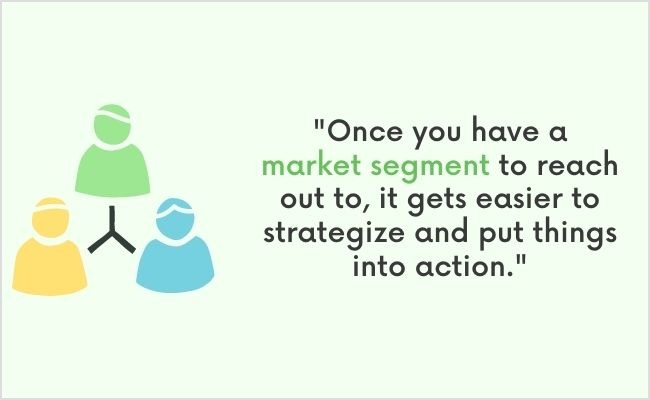
To build the marketing persona for your brand, you have to work on the following things:
Identification of your target audience
Create an ideal audience to ensure that you aren’t performing in front of an empty hall or the wrong audience. Once you have a market segment to reach out to, it becomes easier to strategize and put things into action.
When it comes to the identification of the target audience, the following demographics play a huge role:
- Demographics: Age, gender, occupation, location, etc.
- Interests: What kind of material would pique their curiosity? What subjects do they discuss? What are their interests and passions outside of work?
- Preferred social media platform: Where do they spend their time, and which social media platform do they prefer? Do they spend their time on Instagram, LinkedIn, or both?
- Goals and preferences: Do they want to get a new job, acquire a skill, or find a tasty new food restaurant? Consider how your company, line of goods, or service will help them achieve their objectives. This knowledge will guide your content creation, tone of voice, and posting schedule, ensuring that every piece of content resonates with your ideal followers.
When brands are clear in their target audience identification, they run smooth social media marketing campaigns. From creating content to running online ads, clarity infuses everything a brand does to build relations and market the product on social media.
Honing the narrative
To crush the social media game, you must know that you must build and follow the brand’s narrative. It’s impossible to get the desired results from social media if a clear narrative of the brand isn’t in place. It’s highly unlikely that a brand could build the marketing persona without clarifying the narrative.
A brand’s narrative may involve:
- The “Why” of the brand
- The value proposition of the products
- Unique selling point (USP)
Honing the narrative explains that everything the brand does or believes in must be clear to everyone on the team – the coherence among the team members helps strengthen the process of building a marketing persona.
Also Read: How to Build a Better Brand Reputation With Reviews?
- To gather real-world data: Avoid assuming anything. In addition, social media analytics can offer a wealth of useful data regarding the demographics, locations, languages spoken, and social media interactions of your followers. By using these insights, you can improve the targeting of your social media ads and hone your approach.
Marketing personas are important because if a brand starts social media marketing without paying close attention to the key ingredients of social media strategy, the results will be unsuccessful.
3. Establish KPIs and other important metrics
Whatever your goals and audience, a data-driven approach to building a social media strategy is essential. Consider the data and metrics that are directly related to your objectives rather than wasting time on meaningless measures. Some of the important metrics you should consider include:
- Reach: The number of distinct users who see your content is known as post reach. To what extent does your material really appear in users’ feeds?
- Clicks: This represents the number of clicks on your post or profile. Monitoring clicks for each campaign is crucial to figuring out what piques people’s interest or motivates them to make a purchase.
- Engagement: This reveals how well you are seen by your audience and how open they are to interaction.
- Hashtags: Which hashtags were you using the most? Which hashtags were most frequently linked to your company? Knowing these responses can help you determine the future direction of your content and posts.
- Likes (Organic and paid): Since obtaining organic interaction is more difficult, many firms resort to advertising that is paid likes. Understanding these variations will enable you to plan your time and ad spending more effectively across various formats.
- Video views: This relates to the number of views you get on a video and varies depending on the platform.
TikTok: Treats video views like impressions.
Instagram provides view numbers for Live, Reels, and Stories.
- Facebook and LinkedIn: They tally views anytime a user watches a video for three seconds or longer.
Growth in followers: Follower growth measures net new followers gained over a predetermined period of time. A follower count by itself doesn’t tell the whole picture, but knowing how many new followers you’ve acquired can help you demonstrate the effectiveness and ROI of campaigns, different kinds of content, and social media experimentation.
Growth rate of followers: This percentage indicates the rate at which your audience is expanding or contracting over time. - Conversion rate: This indicator counts the number of individuals you persuade to take a desired action on social media, such as buying something, downloading content that is only available to subscribers, or signing up for a webinar, newsletter, free trial, etc.
Score for customer satisfaction (CSAT): A CSAT indicates customers’ overall satisfaction with your product, service, or brand. You can use social media to gauge customer satisfaction (CSAT) by DMing clients and inquiring about their likelihood of recommending your company.
For more information, read 16 social media KPIs you need to track to measure success.
4. Be aware of your competitors
You might have enough audience data by this point to determine which platforms to prioritize.
However, it is beneficial to examine the social media activity of your competitors in related industries before you make that decision.
The good news is that you can learn from your competition, which is very likely already employing social media marketing.
Conduct a competitive analysis and examine their profiles and material in detail to learn about the themes they cover, the tactics they use, and the level of engagement they receive from various pieces of content. This will assist you in gauging the types of content that your audience likes and those that they find less engaging.
Which platforms do your competitors use regularly, and which ones do they ignore? Where are they seeing the greatest returns, and where is the lack of engagement? Are they passing up a chance, or are your targets favoring one platform over another?
You may identify market gaps and opportunities and obtain crucial information to inform your strategy by examining the social media accounts and content of your rivals.
By the way, this is not a one-time deal. It’s important to constantly carry out competitor analysis and be on your guard.
Try: Free Instagram Competitor Analytics tool
5. Choose the right social media platforms
To lay down a solid foundation for your social media strategy, you must opt for a select number of platforms that are ideal for reaching your potential audience. Of course, you can’t be on a dozen social networks just because they exist. This is one of the biggest misconceptions among social media users, especially those who are new and trying to crush it.

Below are some tips that’ll help you choose the right social media platform for your business:
- Find out where your prospective audience exists
- Take a look at the competitors’ social media (see where they have a maximum audience)
- Look at the content form your audience may like to consume, such as video, audio, or visuals
- Take a look at the comparison of how the audience normally responds on either platform
- Try different social media platforms: Test, analyze, and repeat
- Don’t overlook your strengths and skills. For example, if you’re good at videos, use YouTube
Tip: Just opt for two or three social media platforms that suit your brand.
The ultimate goal isn’t to hop on to every social media network. Instead, the purpose should be hanging out somewhere you belong.
6. Create an effective content strategy
Creating engaging content on social media gives us a chance to help out others through our ideas, suggestions, and knowledge. It gives us leverage, and thus, the engagement begins between the brand and the audience.
Creating an effective content strategy is one of the essentials of building a social media strategy. If you don’t know what types of content you’re going to share on social media, there is no point in using the social platforms.

The idea here is that if your objective is to increase traffic to your website, then creating interactive posts that get lots of engagement but no website traffic is useless.
Also, you have to create content that your audience appreciates and helps you communicate with the audience.
An important part of building a winning social media content plan is identifying the right content for the right platforms. For example, you can’t keep sharing testimonials on Facebook if your audience doesn’t appreciate them. You have to find the right mix of content for each platform.
The first step in creating a successful social media content strategy is creating a content calendar that guides you through the process of creating social media content.
7. Create a social media content calendar
Consistency is crucial in social media marketing. Maintaining audience engagement necessitates a steady stream of insightful information. You must create a content calendar that specifies exactly when and where you will post in order to accomplish this.
To determine what is most effective for your audience and business, you may first want to experiment with posting times and frequency. The goal is to find the ideal balance between blogging too frequently and alienating your audience and posting infrequently and becoming forgotten about.
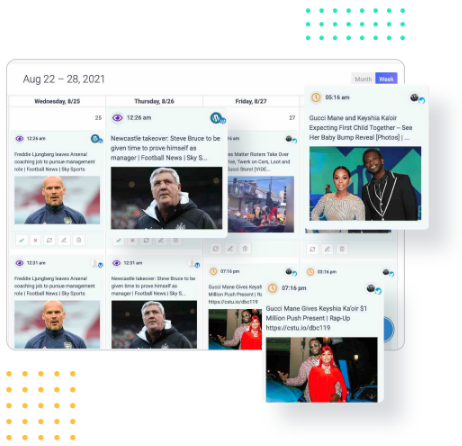
Social Media Calendar for Digital Agencies
Organize all your social posts and visualize your client’s social media content plan with an interactive Content Calendar
14 days free trial – no credit card requiredYour objectives are to achieve as much engagement and attention as possible, and how you achieve them will depend on several variables, including your audience, business, season, and upcoming holidays.
A content calendar may help you stay organized and plan ahead, which is terrific. You can use your calendar to schedule significant occasions, holidays, key moments in the business, and trends.
Is there a particular holiday that your customers and brand really relate to? To ensure that you’re prepared, begin organizing your content at least a few weeks ahead of time.
Try this: Social media content calendar for an entire year with ready-made posts!
8. Engage the audience to deliver value
Once you’ve established your presence on social media, which means you have figured out the audience to target and the social media platforms to use, then start delivering value.
If you’re not delivering value:
- Followers may start to drop
- Most of the audience would forget you within a few weeks
- You don’t get to build a connection with the audience
- Your interaction drops off on social media
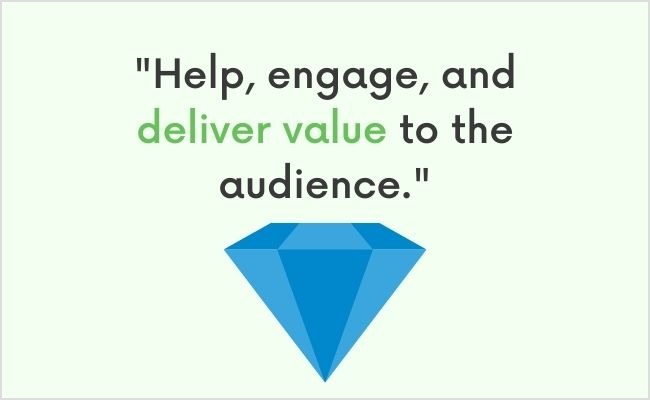
There are five essential elements of engaging the audience to deliver value on social media. Let’s take a look:
I. How informed is the audience about the engagement?
Are you trying to communicate out of the blue, or have you informed the audience about the content that they might see? The point is, whether it’s a Facebook live or Twitter chat, the audience should be up-to-date with the plan.
II. Do they know where you hang out most of the time?
It’s imperative to have a connection so that they know where they can find you whenever there is a possibility of interaction.
III. What do they expect to receive from you?
It’s important to have a clear communication channel to help guide the audience about the service or product. If the followers aren’t sure what you do, they’re likely to unfollow at some point or may never interact with you. So, you can use your cover picture, display picture, bio, and URL to explain what your company does.
IV. What value are you bringing to the table?
It matters a lot to the audience how, where, and when you’re helping them. Many companies use their official blogs alongside their social media channels to help engage and deliver value to the audience. Every brand is different, and so is its strength.
V. How are they responding to your stuff?
It’s important to understand whether your content, efforts, and strategies are helping the audience or not. There could be different metrics to find that out. For instance, growing followers and engagement could be a point to note down. Check your Facebook mentions, Twitter interactions, and Instagram comments to find out what’s happening at a glance.
9. Analyze the feedback
When you’ve started delivering value to the audience, the job doesn’t finish there. In fact, the next phase begins at this point. The idea is that you must have a system in place through which you can analyze the performance of your social media activity.
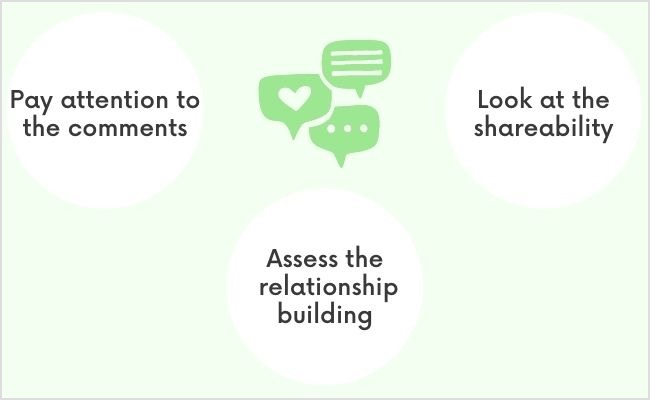
Let’s cut to the chase and see three things you can do to sync with the social media results and analyze what’s going on:
Pay attention to the comments:
One of the important aspects of feedback is that you get to hear what others think about your work. However, it could blow things off sometimes, but most of the time, you get to hear encouraging and positive things, which ultimately help you get better at your craft. If you haven’t paid attention to your comments on Facebook, LinkedIn, and Instagram, then you should start doing it now. If you aren’t getting comments at all, then you must encourage people to comment and leave their feedback underneath your content.
Related Read: How to Positively Handle Negative Comments on Social Media?
Look at the shareability:
People share content on social media if they feel connected with you, they extremely like what they just consumed, or they want to help others. The more they share, the better. If people are sharing your content, continue creating that type of content. On the flip side, if they aren’t sharing, try to understand the problem.
Also Read: How to Create Shareable Content in 2025?
Assess the relationship-building:
Analyze the relations both qualitatively and quantitatively. For example, if a blog post gets ranked high in the search engine, not only will you get lots of visitors, but you will also see social shares and comments. Thus, it leads to relationship building.
10. Analyze the performance
Being aware of the nuances of your social media metrics is a great plus. It doesn’t mean that I’m encouraging you to ponder the number of your likes, shares, and followers—on the contrary, you should focus on understanding your brand’s strength and the target audience’s needs. It may require a subtle mindset to get along because you might want to build your fan base from scratch and would have to go all the way up by taking one step at a time.
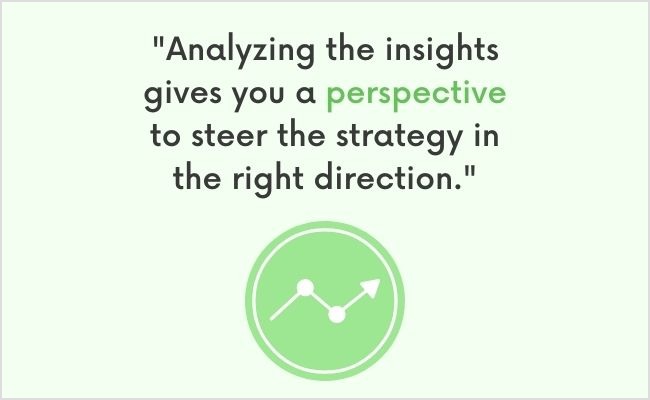
There will be certain things that will help you analyze the performance of your social media strategy. Here are some of the key performance indicators to consider:
Social media insights
You don’t need to do anything fancy to get social media insights. Just start looking at the statistics and insights of your social media channels. Your Facebook page has a tab dedicated to insights. Go to that option and see what’s happening on your Facebook page.
Similarly, if you go to your Twitter profile, you can see a small tab of impressions on the right side of the page, which tells you how many impressions your tweets have gotten over a specific period.
Don’t get overwhelmed by the process of getting insights into your social media. You would not have to just look at your social media insights to get the whole picture. If you aren’t looking at what others are doing and what’s working for successful brands and social media influencers, you might be missing out on a lot of opportunities.

Analyze, Understand, and Improve Your Social Strategy
Stack your key social metrics against those of your competitors and make targeted steps towards social media success.
14 days free trial – no credit card required

Analyze, Understand, and Improve Your Social Strategy
Stack your key social metrics against those of your competitors and make targeted steps towards social media success.
14 days free trial – no credit card requiredContentStudio insights
It’s a tool offered by ContentStudio. It shows your content’s performance regarding page views, unique visitors, bounce rate, and other page tracking metrics. The interesting part is that it supports websites and Facebook pages.
Website tracking
Website tracking could be a vital signal to understand your content’s popularity on social media, especially if you look at the content that is driving traffic from social media to your website or blog. I’d highly recommend keeping an eye on the following website statistics tools:
Usermaven:
With Usermaven’s spotless tracking, all events are automatically recorded, eliminating the need for coders and making it the most user-friendly analytics solution for product managers and marketers.
Facebook Pixel:
Facebook Pixel is a small code that you need to put into your website. It helps you reach out to website visitors through Facebook advertising. It’s a tool for remarketing that plays a role in building a social media strategy.
So, it’s important to reflect on the insights and statistics before concreting your social media strategy. This will give you a perspective and help steer the strategy in the right direction.
11. Optimize your social media profiles
Choose the social networks you want to concentrate on, then create new or optimize your existing accounts.
Select the networks to utilize and the best way to use them. Choosing which social media platforms to use requires that you also decide on your approach for every network. For instance, you decide to use Instagram to interact with current clients, Facebook to attract new ones, and Twitter to provide customer support.
Related Read: The Art of Social Media Optimization: Best Practices and Strategies
Formulating mission statements for every network is a useful practice. By using these one-sentence announcements, you can concentrate on a very particular objective for each social network account.
Conclusion
One important reason for writing this blog post is to ensure that you don’t invest your time, energy, and money into social media campaigns without understanding the game and having a strong social media strategy.
Social media isn’t about sharing your blog post over and over again but rather a medium to build connections with strangers across the globe who seem interested in your work, words, or wisdom.
One of the takeaways of this blog post is to start paying attention to your brand’s strength and how you can use it to help others. It could give the brand a stage to connect, engage, and sell to audiences that you won’t be able to reach otherwise.
If you start following the steps that I shared, not only will you figure out who you should reach out to, but you will also learn how to engage them and turn a bunch of information seekers into your loyal audience members.
It’s not a quick-buck scheme – social media growth takes time.
FAQs
What are social media strategies?
A social media strategy is a comprehensive road map that shows how your company will use social media to accomplish your marketing and business objectives.
What are the steps to a successful social media strategy?
Set your marketing goals
Know your audience inside out
Establish KPIs and other important metrics
Be aware of your competitors
Choose the right social media platforms
Create an effective content strategy
Create a social media content calendar
Engage the audience to deliver value
Analyze the feedback
Analyze the performance
What is the 5 5 5 social media strategy?
This method includes commenting on and liking 5 posts within 5 minutes to grow your social media engagement. This will increase traffic and potentially lead to more sales for your company.
